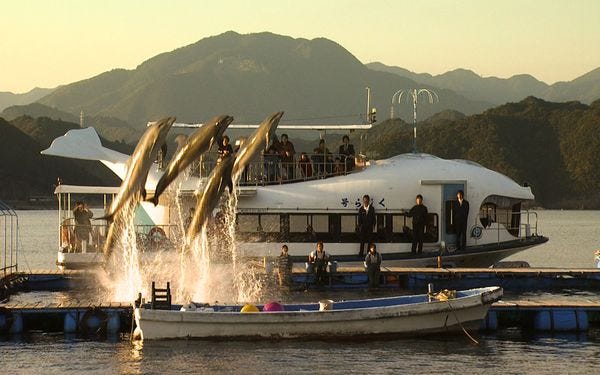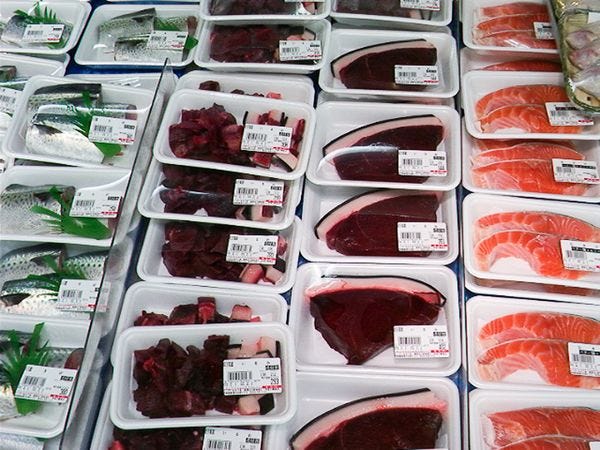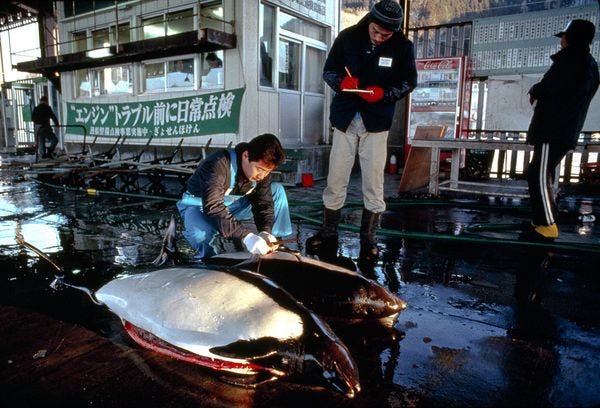Cove Guardian Elora Malama West Takes on Taiji for the Sea Shepherd Conservation Society
By Jordan Schaul | National Geographic | October 13, 2013
National Geographic Society contributor Dr. Jordan Schaul has embarked on a new endeavor to find young nature conservation crusaders and tell their story through exclusive interviews for NAT GEO NEWS WATCH.
I believe in citizen science and informed citizen advocacy. I’m particularly impressed by young people who advocate on behalf of the voiceless creatures of nature. We need more knowledgeable young crusaders on this planet helping the animal kingdom and protecting nature and natural resources. I have launched a new interview series with some young crusaders who are making a difference for animal kind. My first candidate selected to participate in this inaugural interview series is Ms. Elora Malama West with the Sea Shepherd Conservation Society.
Elora’s autobiography: Elora Malama West is a home-schooled teenage activist. She is on the Sea Shepherd Conservation Society (SSCS) Board of Advisors for Children’s Education and Activities. She is currently 19 (dob: 11/09/93). West will finish her associate degree in December 2013 and is applying for schools with Bachelor's degree programs in media activism and visual journalism.
In the fall of 2010 at age 16, Elora accompanied her father, Scott West, to Taiji, Japan for the first SSCS Cove Guardian campaign. They spent three months on the ground reporting every day about the plight of the dolphins. While there Elora began a blog, A Teenage Activist: This Girl’s Soapbox, and encouraged thousands of people to call the Japanese embassies in their area to protest the dolphin slaughter. Her young age combined with her blog reports brought international attention to what is happening in Taiji, Japan.
During her time in Japan, Elora participated in the first-ever meeting between the mayor of Taiji and the activists opposing the town’s annual slaughter; and gave a speech at the Foreign Correspondents Club of Japan about the issue in Taiji. Elora hopes to send a message to her generation that you are never too young to make your voice heard.
Elora also spent time in Australia aboard the Steve Irwin. She worked with SSCS Australia in preparation for Operation Zero Tolerance, the 2012-2013 campaign against Japanese whaling in Antarctic waters. In April 2013, she joined SSCS US at the Columbia River for the Dam Guardian campaign in an effort to end the slaughter of sea lions in Washington and Oregon.
Interview:
JORDAN: WHAT EXACTLY IS GOING ON IN JAPAN THAT IS SO REPREHENSIBLE REGARDING CETACEANS?
Elora: The genocide and captive trade of what many scientists consider to be non-human persons. Cetaceans have proven to be highly intelligent creatures. Thomas White (philosopher and author of “In Defense of Dolphins”) characterizes them as non-human persons. The only thing separating cetaceans from us is opposable thumbs. Just as we oppose the genocide of people in different cultures, this is another culture. These are intelligent, sentient, and social/family-oriented beings, their home is just in the ocean.
Taiji has been drive hunting and killing an estimated 2,000 cetaceans annually since about 1970, with 20,000 killed annually throughout Japan. In recent years, numbers have been dwindling. Our records showed that 803 cetaceans were killed in Taiji last year, with 15 deaths being related to juveniles being released and washing back up.
We believe this low number of kills is because fewer pods exist in Japanese waters.
Before the mass slaughter begins, trainers from the local dolphinariums come and select dolphins to be sold into captivity around the world. Without the demand for dolphins and whales for a swim with dolphin programs, the slaughter would cease to exist. Our records show 236 cetaceans were taken for captivity in Taiji last year.
JORDAN: I HAVE NOT SEEN THE MOVIE THE COVE. WOULD YOU RECOMMEND IT TO ME?
Elora: I would. I think it is a very important movie to see. Director Louie Psihoyos made a remarkable film that not only sheds light on a very barbaric thing, but also opens your eyes to the issues of toxic meat, the lucrative captive industry and the harmful effects on cetaceans, and the incredible intelligence of these animals.
As Sea Shepherd founder Captain Watson has often said, “We search the universe and beyond looking for intelligent life to communicate with, and we have this incredible being right on our very planet that we cannot understand… and probably should.”
The movie is set up like a spy thriller at some points. I promise you won’t be watching 2 hours of slaughter, you don’t actually see any killing until the last 15 minutes of the film.
The movie won the Academy Award in 2010 for best documentary.
Elora: There have been a few studies done in somewhat recent years. There was the Blue Voice study in 2008.
“The first test conducted in 2008 by BlueVoice.org of meat from a bottlenose dolphin revealed Mercury at 7.20ppm – eighteen times higher than the maximum level permitted under Japanese health standards.”
There was a study conducted in the Cove. If I remember correctly, one sample of dolphin meat from local supermarkets was at 2000ppm: a very high and toxic level of mercury. The health department in Japan has said that pregnant women should not eat meat because it causes birth defects.
Dolphins and whales are apex predators, and the ocean is downhill from everything. They are eating PCBs, mercury, and many other pollutants. Those chemicals and compounds work their way up the food chain. Tuna has been tested recently to be very toxic as well. The studies I listed above was conducted a few years ago, but if anything I am sure things have only gotten worse.
JORDAN: SOME CAPTIVE FACILITIES AROUND THE WORLD ARE SUPPORTING THIS TRADE. HOW SO AND HOW DO YOU KNOW?
Elora: I’ve witnessed the transfer of live dolphins from Taiji to dolphinariums and museums in Japan, as well as dolphins being packed up for shipment internationally. I saw on countless occasions dolphins and small whales taken from Taiji’s cove and placed in captive holding pens or transferred to one of the nearby museums/dolphin parks. Trainers from these local dolphinariums come and select which whales they will use to fill the orders coming in from all over the world. They lock the cetaceans up and break them, training them to rely on humans for food.
While I was on the ground, during the first three months of Operation Infinite Patience, we kept seeing dolphins loaded onto trucks. They were put in crates just wide enough and long enough to have the animals lay there. Then they would fill the crate with a little water and pump something into the water (we think a light sedation drug). One day Scott West and I decided to follow a truck to see where it dropped off the dolphins. It was an 8- or 9-hour road trip and we managed to not be seen during the entire tailing. We followed the truck into a dolphinarium called “Suma Aqualife Park”. What is interesting about this is IMATA (The International Marine Animal Trainer’s Association) claims they have nothing to do with Taiji. However, Suma Aqualife Park was represented at IMATA’s next marine animal trainer conference.
Sea Shepherd’s Cove Guardians have followed trucks of live Taiji dolphins to airports, for shipment out of Japan. Taiji receives orders for dolphins and small whales (a prize bottlenose dolphin, one that looks like Flipper, is the most valuable). Ceta Base has tracking information on all these dolphins.
Trainers from the local dolphinariums come and select these cetaceans for shipment, and then leave minutes before the slaughter begins.
The live trade of cetaceans into the United States is illegal, but captive-born cetaceans can be shipped inside the country. We believe cetaceans come from Taiji or similar drive fisheries, and somewhere in the world, the paperwork is falsified to state that the dolphin was born in captivity, allowing the shipment of live caught dolphins into the United States.
Without the revenue of the captive trade, Taiji could not afford to keep operating their boats with simply the sales of cetacean meat. It’s our understanding that dead dolphins are worth around $600, while a trained captive dolphin can sell for hundreds of thousands. All captive dolphin industries support this trade. Without the demand for live dolphins and whales… so people can watch them jump through hoops, so people can kiss them and hug them… the drive fisheries like Taiji and the slaughter of cetaceans would eventually come to an end. Our slogan: Don’t buy a ticket.
JORDAN: WHAT ARE CELEBRITIES SAYING ABOUT TAIJI? I KNOW PEOPLE LIKE JENNIFER ANISTON AND THE OUTSPOKEN ANIMAL ADVOCATES THE BARBI TWINS ARE UP IN ARMS. WHAT ABOUT OTHERS? WHAT ARE THEY SAYING?
Elora: I’ve personally seen the passion for stopping this slaughter and captive trade from celebrities like the Barbi Twins and Leilani Munter. But many of our #tweet4taiji tweets have been shared by celebrities, including Danny DeVito and Kirstie Alley.
Sea Shepherd has celebrity supporters including Ian Somerhalder, Clive Standen, Pamela Anderson, Michelle Rodriguez, Joe Perry and Steven Tyler of Aerosmith, Martin Sheen, Red Hot Chili Peppers, Xavier Rudd, and the Smashing Pumpkins. This is just to name a few. These people have come out in support of Sea Shepherd’s mission and campaigns. I assume that means they support our work in Taiji as well.
We are always grateful for celebrity support. However, we welcome and are equally appreciative of the support we get from ordinary, caring people around the world. We have been fortunate to have Cove Guardians from the USA, Japan, Netherlands, France, Switzerland, Canada, Germany, Australia, and other nations. That cross-section of nations is a testament to the fact that people the world over see the cruelty that exists in Taiji and is willing to stand on the front lines to bring an end to it. As our credo suggests, “We will not stop until the slaughter ends.”
Please watch this compelling video titled “I am a Cove Guardian,” featuring some of our Cove Guardian crew.
JORDAN: IF YOU COULD MAKE ONE STATEMENT, WHAT WOULD YOU SAY?
Elora: If there is NOT a global consciousness shift within the governments of every country and their citizens, we are going to destroy everything. No country has stepped up to the plate and taken the lead in protecting our one and only home.
A small group of committed global citizens, including children, are screaming for change and trying to push the world in that direction. Yet, they are called terrorists and pirates for defending life on earth. We will be our own undoing if this doesn’t stop.
ABOUT NATIONAL GEOGRAPHIC SOCIETY
The National Geographic Society is a global nonprofit organization that uses the power of science, exploration, education and storytelling to illuminate and protect the wonder of our world. Since 1888, National Geographic has pushed the boundaries of exploration, investing in bold people and transformative ideas, providing more than 14,000 grants for work across all seven continents, reaching 3 million students each year through education offerings, and engaging audiences around the globe through signature experiences, stories and content. To learn more, visit www.nationalgeographic.org or follow us on Instagram, Twitter and Facebook.
MEET THE AUTHOR
Jordan Carlton Schaul With training in wildlife ecology, conservation medicine, and comparative psychology, Dr. Schaul's contributions to Nat Geo Voices have covered a range of environmental and social topics. He draws particular attention to the plight of imperiled species highlighting issues at the juncture or nexus of sorta situ wildlife conservation and applied animal welfare. Sorta situ conservation practices are comprised of scientific management and stewardship of animal populations ex-situ (in captivity / 'in human care') and in-situ (free-ranging / 'in nature'). He also has a background in behavior management and training of companion animals and captive wildlife, as well as conservation marketing and digital publicity. Jordan has shared interviews with colleagues and public figures, as well as editorial news content. In addition, he has posted narratives describing his own work, which include the following examples: • Restoration of wood bison to the Interior of Alaska (As Animal Curator at Alaska Wildlife Conservation Center and courtesy professor at the University of Alaska) • Rehabilitation of orphaned sloth bears exploited for tourists in South Asia (While executive consultant 'in-residence' at the Agra Bear Rescue Center managed by Wildlife SOS) • Censusing small wild cat (e.g. ocelot and margay) populations in the montane cloud forests of Costa Rica for popular publications with 'The Cat Whisperer' Mieshelle Nagelschneider • Evaluating the impact of ecotourism on marine mammal population stability and welfare off the coast of Mexico's Sea of Cortez (With Boston University's marine science program) Jordan was a director on boards of non-profit wildlife conservation organizations serving nations in Africa, North and South America and Southeast Asia. He is also a consultant to a human-wildlife conflict mitigation organization in the Pacific Northwest. Following animal curatorships in Alaska and California, he served as a charter board member of a zoo advocacy and outreach organization and later as its executive director. Jordan was a member of the Communication and Education Commission of the International Union for the Conservation of Nature (CEC-IUCN) and the Bear Specialist Group of the IUCN Species Survival Commission (BSG-SSC-IUCN). He has served on the advisory council of the National Wildlife Humane Society and in service to the Bear Taxon Advisory Group of the Association of Zoos and Aquariums (AZA Bear TAG). In addition, he was an ex officio member of the council of the International Association for Bear Research and Management.






